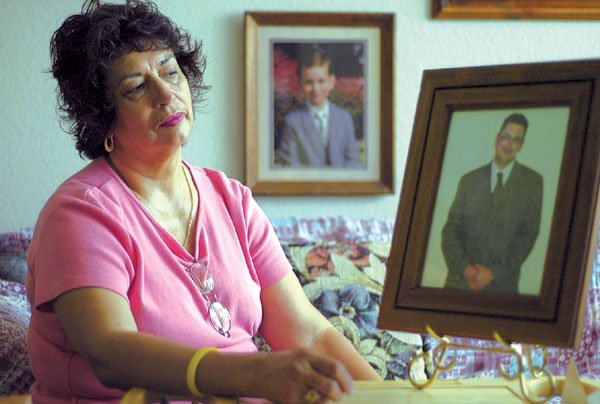Jahaziel Levi Casas had complained for months of back pain, but
he’d never gone to see a doctor. A healthy young man of 19, he
didn’t feel the need.
Jahaziel Levi Casas had complained for months of back pain, but he’d never gone to see a doctor. A healthy young man of 19, he didn’t feel the need.
What Casas didn’t know was testicular cancer had been growing in him for nearly two years, its only clear symptoms being swelling, pain or hardness of the testes.
This year, nearly 8,900 American men – mainly young men – will be diagnosed with the relatively rare disease that cyclist Lance Armstrong was diagnosed with in 1996. Some 96 percent of them will beat it thanks to early detection and the cancer’s particularly favorable responsiveness to treatment.
When Casas’ mother found a large bump on his back he reassured her, “It’s just a pimple,” but Rebecca Stansell-Garcia wasn’t so sure.
“I observed it more closely to see if there was a bite or a sore, but this one didn’t have any of the signs,” said Stansell-Garcia. “It was just a big lump an inch and a half in diameter, so I mentioned it to his father. We decided to take him to the doctor.”
What physicians found was a cancerous lump whose source they traced back to the testicles. By the time Casas was diagnosed, he had stage four testicular cancer – the most advanced form of the disease. It had spread, doctors said, to kidney, liver, stomach and brain, and it had begun to come up through the skin in the form of tumors like the one Stansell-Garcia found. Even so, he was given a 50 percent chance to live.
“Testicular cancer has been one of the real success stories in that even some of the very advanced cases can have a cure,” said Dr. Dayton Misfeldt, a San Jose-based medical oncologist. “I think any (reason for that) would be really speculative, but it’s very sensitive to chemotherapy – so much so that when someone gets beyond a couple of years of treatment, we can usually be confident that they are truly cured.”
Relapse rates are lower for testicular cancer than most, requiring just two years of monitoring in most cases rather than the five years of observation required for colon cancer patients and the lifetime of observation for breast cancer survivors, said Misfeldt.
“I usually see one or two cases a year,” said Misfeldt, a former Stanford physician who has been in private practice for 18 years.
Unfortunately, Casas never got to the point of remission. After several failed attempts at chemotherapy and a last effort at alternative medicine in Tijuana, he died July 6 at age 20.
“I’ve kind of made it my mission to let any mother know – they need to have their kids physically checked, especially in their private parts,” said Stansell-Garcia. “Jahaziel was tired a long time, but he was going to school and working. He seemed healthy, but if we knew…”
Of the 8,900 men who are diagnosed with the disease this year, about 360 will die, according to the American Cancer Society. By contrast, 217,000 women will be diagnosed with breast cancer and about 40,000 of them will die, according to the ACS.
“For men, there’s really no screening test,” said Dr. Roger Shiffman, a hematology and oncology specialist who practices with Monterey Bay Oncology in Monterey. “For women who might have breast cancer, there are regular mammograms, but testicular cancer is so much less common, it wouldn’t make sense to screen everyone.”
In men at risk, an ultrasound of the testicles can be used to rule out cancerous growth, said Shiffman.
The cancer is discovered most frequently in men ages 20 to 35, and is four times more likely to occur in white men than in African-American men, according to the Food and Drug Administration.
In the early stages of the disease, treatment usually involves the removal of the affected testicle, said Misfeldt. Later-stage cancers may not require partial castration, but are usually treated with chemotherapy.
Swelling of the testicles, with or without pain and hardness, is the most typical sign of the disease, but a variety of far more minor conditions can produce the same symptoms, said Shiffman. If you experience any of these symptoms, consult your physician immediately for a more thorough screening, he said.












